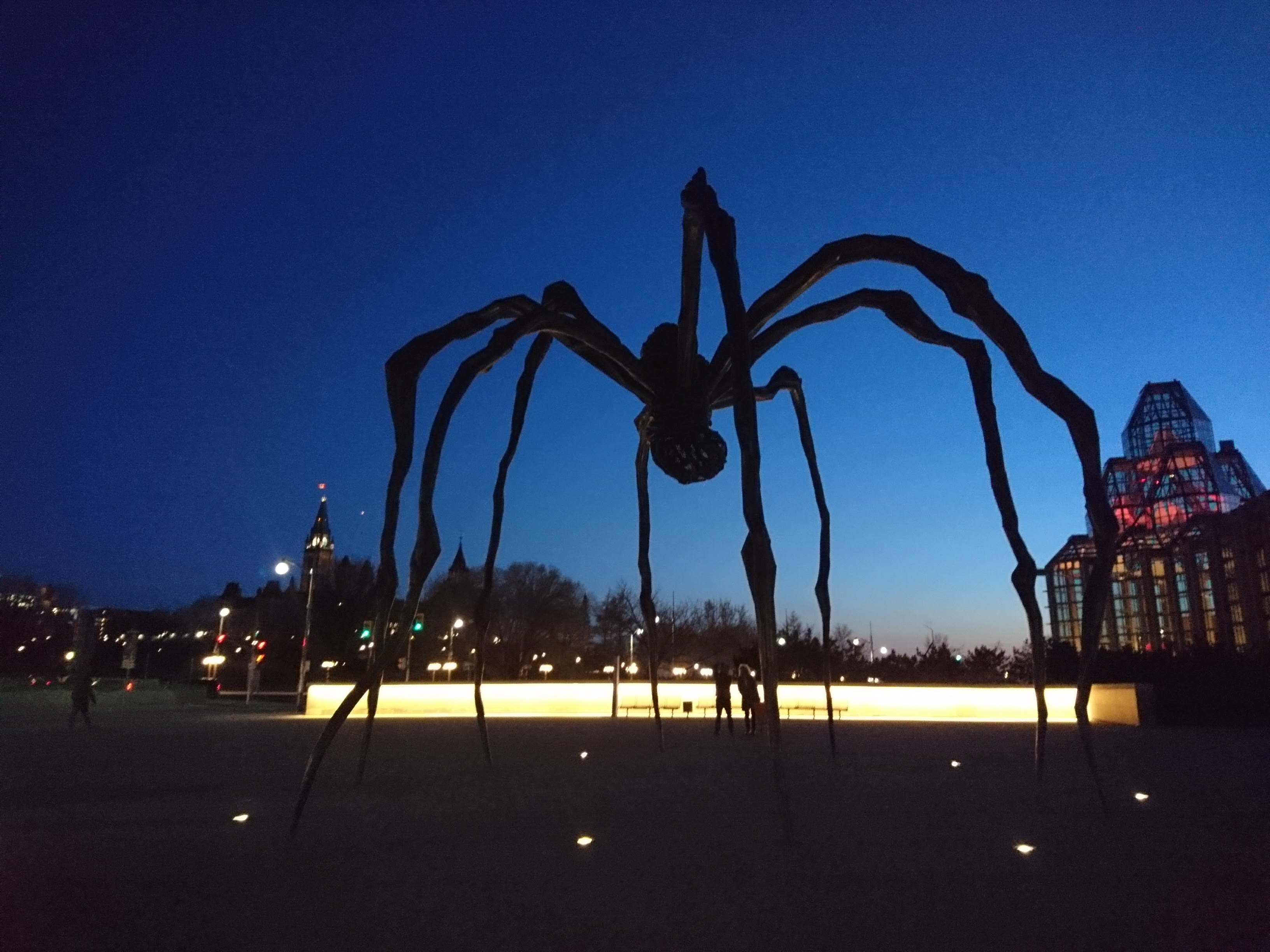
Uploaded on 2017-06-09 by Andres Pena-Cabra
In this picture, you can see in front of you a gigantic arachnid sculpture, which guards the entrance to the National Art Gallery at your right, and its gardens (which were designed by Cornelia Hahn Oberlander, from Vancouver, and who was inspired by A.Y. Jackson's painting Terre Sauvage). Somewhat far back, you can see as well the Parliament building. In this picture, I would like to focus on the National Art Gallery. A gigantic arachnid sculpture stands in the site of the gallery, decorating the entrance to the building. This sculpture is made of bronze, and was casted by Franco-American artist Louise Bourgeois. It was one of five identical sculptures made by the artist, other ones are placed in Bilbao (Spain), Tokyo and Seoul. Placing it in Ottawa required its 6,000 kilograms travel many kilometers. The National Art Gallery itself was designed by Moshe Safdie, urban planner from Israel, with offices based in Boston and Toronto. Many ideas about its design, then, saw light faraway from its actual site. The Gallery is mainly made of granite, concrete and glass, none of which are actually made in Ottawa. But not only its construction materials and conception ideas came from afar. As a building itself, specially designed to store and convey information related to beauty, identity and art, it has seen most of its contents come from faraway, including works of art made by first nations up in the northern territories and made out of whale bones and sea lion teeth. As a result, global flows of information, materials, ideas, and values have coincide at this site as the National Gallery of Canada.